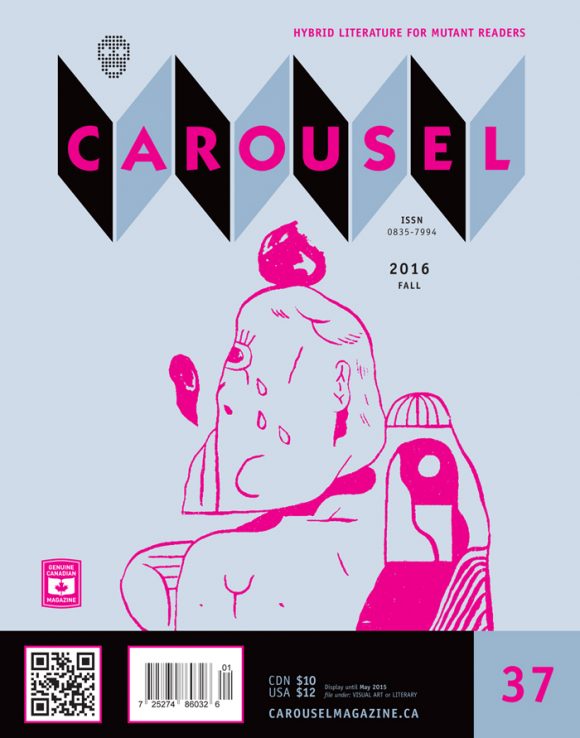From the Archive: Justin Stephenson ‘The Complete Works’ Interview (CAROUSEL 37)
Filmmaker Justin Stephenson took fifteen years to carefully create The Complete Works — a labour of love that creatively adapts the work of internationally acclaimed avant-garde poet bpNichol.
From comic book detective stories & westerns to documentaries & magic realism, and from hand-drawn animation to computer-generated images, The Complete Works wrestles Nichol’s writing off the page and projects it onto the screen. It uses bpNichol’s poetic methods on Nichol himself to create a film that is subversive, entertaining and visually arresting.
Interview conducted 2016
Could you recount the story of how you first came to connect to bpNichol’s work?
While I was studying broadcasting at Ryerson (I thought that was going to be my future, which turned out not to be the case) one of the classes I took was Canadian Literature, with Roberta Imboden. It was an amazing class. She really encouraged her students to write creative responses based on the texts we read; it was the first time I’d ever encountered that style of teaching. We did a poetry component using The New Oxford Book of Canadian Verse, and one of the many poets included in that collection was bpNichol. His work ‘Gorg: a detective story’ was exciting because it was the first time I’d ever read poetry that put me onto the page as opposed to taking me off the page. It involved me as the reader in the generation of the meaning of the poem. In Gorg, the viewpoint shifts: you’re the murderer, you’re the detective, you’re the victim, you’re the person hosting the party, you’re the reader. It pushes you through all those identities in the text — it just felt so different.
I went to the library and picked up the first four books of The Martyrology and read them cover to cover two or three times, and was so excited by the work that I wrote bpNichol a letter. I looked him up in the phone book (he was still in the phone book at that time, this was 1990), found his address and wrote him a letter — an excited 19-year-old saying, “you really understand me, I understand you” in that 19-year-old way. I asked him many questions about the text, and waited by the mailbox for months — and eventually I got a letter back from Ellie Nichol, and she said something like, “Thank you very much for your letter. It really reminds us all of how much effect he had on his readers and how well he was loved. It was difficult to read but at the same time, thank you very much and here’s a book of his poetry. Please stay in touch.” It was really kind and generous. She sent me Gifts, which was a fitting book to receive; it’s a beautiful text and it’s been with me for a long time — it sits on my shelf and I put all of my correspondences with Ellie in the back of the book.
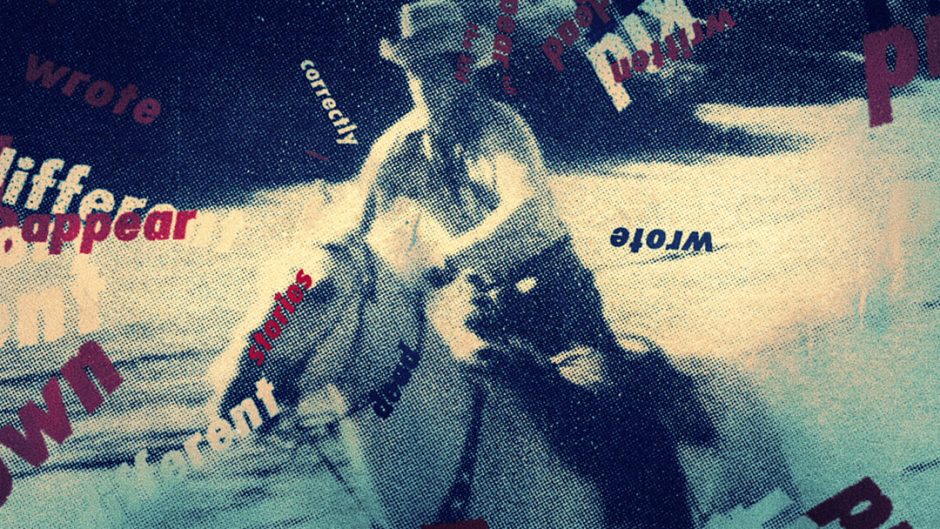

Obviously, Nichol’s work has stuck with you.
It certainly has — his attention to the material of language, of the poem, and of the story, is something that really captured my attention and imagination. I developed my practice around those ideas.
Why did you decide to adapt Nichol’s work into a film?
I always thought I would make this film. I love the work, and I thought it was important work; it was a natural fit for me as subject matter for a film. I’d studied to become a filmmaker, and was working as a professional director/designer in commercial production and film production. I was getting really involved in that world, but wanted to take a step back to work on something more personal. At one point, around 1998, I was in the middle of a production and I was having a terrible time, and I just thought, “screw it, I’m going to just quit everything right now and work on this film” — and that’s what I did.
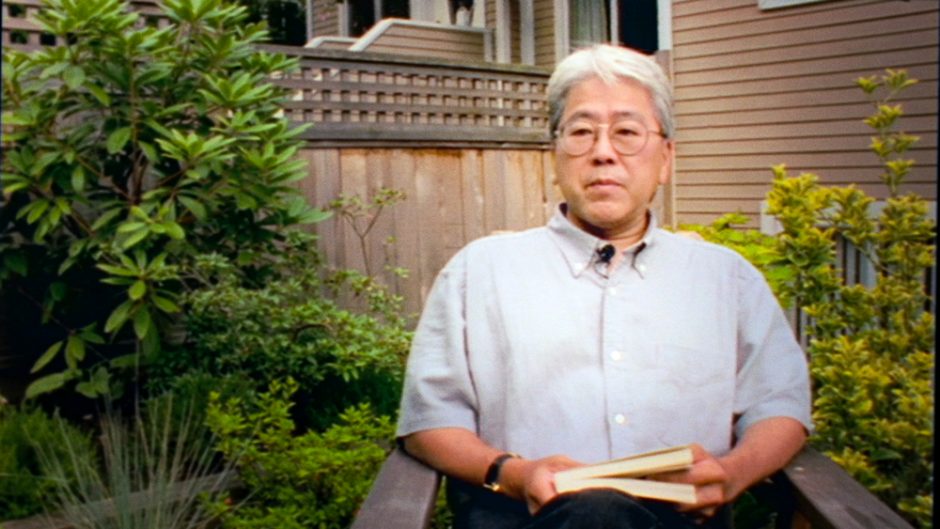
I visited with poet Roy Miki a couple of times to talk to him about the project. I put together a package and applied for arts council funding. I was successful with the granting, both the Canada Council for the Arts and Ontario Arts Council were very generous with me. I set out to shoot the film, which in its infancy was a very different film. I was going to do this coast to coast travel narrative — all the way across Canada visiting his friends — a road trip film. The travel was going to be the thing that held it together, and in many ways a lot of Nichol’s work speaks to that. There’s a sense that he’s writing as he’s looking out the window of a train — the process of transit or the corridor of communication from one place to another becoming the subject of the poem. That was the idea initially and I think I sort of kept with that, but I dropped the travel part of it and I made it more about the language itself. You can still see remnants of this initial approach in the film but it’s no longer the glue that holds everything together.

I remember the ‘Music’ sequence in the film that’s shot out of a car window.
That was based on ‘Music’ from Love: A Book of Remembrances. That book is really where I felt a strong sense of “moving through the poem” in the text. It’s a telling of language as you pass by it — the physical experience of the text.
The film took about 15 years to make. Could you walk us through the process of its creation?
After I got the support from the arts councils, I traveled to the Simon Fraser Special Collections — I did a lot of research there, spent weeks at the archives. Gene Bridwell was the archivist at the time, and he let me camp out there; Ellie Nichol was really instrumental in granting me access to the work. Through that process of sitting with the works at the archives, and through reading the books, I assembled a group of texts that I thought would be interesting to include in the film — but I also wanted to open myself up to what other people might like to contribute as well.
I got a list of addresses of bpNichol’s friends from Ellie, but didn’t actually write them until we had already taken to the road and started filming. I wrote them all from a hotel room in Sudbury, Ontario on my way across Canada. I wrote them all postcards and gave them my email address and basically said, “I’m traveling right now, I’ll be there in ‘X’ days and would like you to be a part of the film”. I got back a lot of responses. Essentially, from that list of people from Ellie, we visited Steven Ross Smith, Douglas Barbour, Daphne Marlatt, Steven Scobie, and Roy Miki, who I had already been talking to at the time. I asked each of the authors to choose a couple of Nichol’s works to read on camera. There were others that were also a part of the filming, but I sadly didn’t end up using their pieces; it would have made the film too long.
We also shot a lot of B-roll footage as we were traveling because at the time I was making a road trip film. One of the places we stopped at that I really wanted to do more with — but ended up not doing anything with — was Plunkett, Saskatchewan. ‘In the Plunkett Hotel’ is a beautiful text in The Martyrology Book 6. There’s a whole mythology around that hotel for Nichol and his grandparents. It was a funny, dusty little town and they didn’t pay much attention to us when we were there initially, but when we visited on the way back they let us explore the hotel, they let us shoot in there — it was almost like we had to leave and come back before they took us seriously. They ended up being really sweet folks, for sure; we did a whole bunch of stuff with those guys and it was a real pleasure.
I gathered all that footage, and the following year we went to the east coast. We went to Halifax and then sort of snaked our way back through Quebec. We ended up not really using a lot of that material either, but at the time I felt like it was important to connect the two coasts together. I was going to start the film underwater and then end it underwater but it didn’t really work. We did the shoot underwater though, which was hilarious.
At that point, I did my transfers because it was shot on 16mm originally; then, I sat on the footage for a while, sat with the texts as well. I went back to working on commercials, got quite busy with work for the next few years — so I didn’t really do a ton on the film, I just sort of picked away at this and that, and thought about its structure.
I then started a Master’s degree at York and Ryerson — Communications and Culture. Early on, I was talking to R. Bruce Elder — who ended up being my supervisor — and he asked me what I wanted to do for my thesis. I said I wanted to do something with psychoanalysis and semiotics. He said, “aren’t you working on a bpNichol film?” I said, “yeah.” He said, “you’re crazy to not do that … just write it on that.” So that’s what I ended up doing, writing around the film. It was really helpful because I feel like it allowed me to clearly articulate a lot of the concerns in the film, to think through a lot of the texts in a way that you just wouldn’t do if you weren’t specifically writing about it. I also produced a very rough iteration of the film while I was in that program. The Master’s degree was an important part of the process in that it gave me hard deadlines and pushed me to get stuff done.
From there it really was a lot of animating. There are things in the film like ‘Drum vs. The Book’ that took me a year to do because it’s a procedural piece; it responds to the audio. Michael Phillip Wojewoda did a generative composition called Faust and then gave me all the individual tracks. I used the tracks to modulate animation parameters. I analyzed all that audio and used it to change colour, size, rotation, lighting, camera movement. It’s entirely an audio-reactive piece. It took me a year to learn how to write the code to do it. Also, when you’re doing procedural work, you can just iterate and iterate and iterate — I probably did a hundred iterations of this piece until finally I arrived at a point where I had to stop. It wasn’t that I had achieved the best possible version, it was just that I realized I had to move on. Same with ‘Interrupted Nap’ — it looks hand drawn but it’s entirely procedural as well. It’s written; it’s code and custom shaders; it’s CGI. It took time to work through my ideas and to develop the code needed to follow these ideas through.
Did you find that to be a pleasurable process?
It was a lot of work. Like any project, you reach points where you’re having second-act problems — where you’re just like, “all right, now what, how do I actually get this done?” You’re staying in on evenings or weekends when you’d rather be going out. Overall though, it was more pleasure than drudgery. Something that really sustained the work, and the project, was the pleasure of the material itself, which is so fun. Nichol’s good humour and good nature helped to drive the production forward.
Nichol is well known for his experiments with language, the materiality of language — especially its visuality. I’m wondering in what way the The Complete Works is connected to or might even carry that concrete-visual tradition?
Absolutely. Materiality on a page is different than materiality in a film and you need to find ways of mapping that interest or that texture or that feeling onto film. It took me time to just give myself permission to explore that fully because initially I was trying very, very hard to remain true to the work. It became evident to me at a certain point — and this was an almost heartbreaking revelation — that in order to make a good film I had to not try to make a book of poems; I had to stray from the texts but stick to the method. That became something that was interesting to me: that the integrity of the work was not in the content but in the method of the work and that was something that I tried to really dig into.
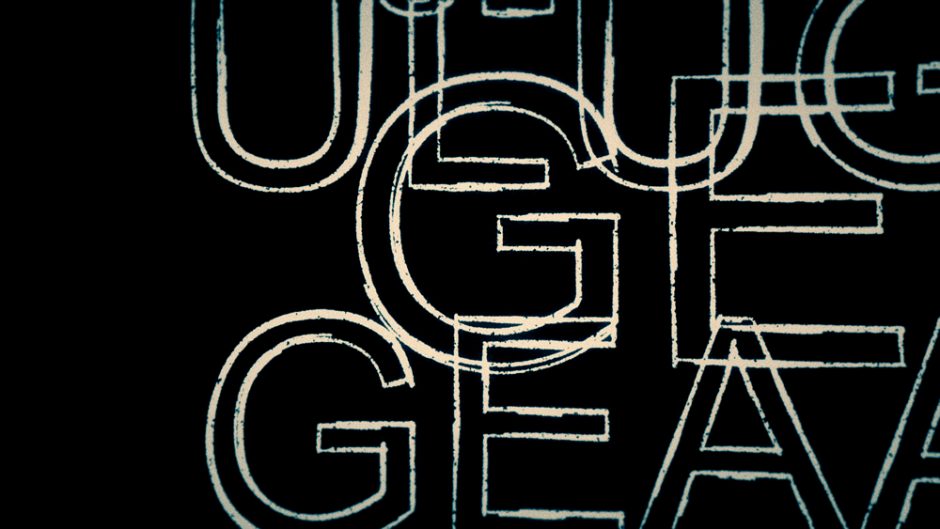
‘Interrupted Nap’ is a good example of that. The original text is in Art Facts — essentially, it looks like somebody has written on a page in marker that was resting on another page. The marker bleeds through and then they’ve written again on top of the marker bleed and then that bleeds through and it’s these successive generations where the semantic sense in the text starts to get subsumed by the visual noise around it. But when bpNichol reads it he’s using this strategy of “if I can see it, I can say it”. He’s reading the reality of the page as opposed to the content of the page. The reality of the marks, the actual marks, becomes what he reads. That’s such an important part of his work in many ways. I tried to do the same thing in film. The reality of this piece for me was the sound of his voice in the recording, and I decide the best approach would be to modulate the parameters of the animation based on that voice, while keeping to this idea of an interrupted text. I tried different ways of interruption in film — like scrolling really fast or layering things over top of one another so they are illegible but then embedding bursts of sense within the nonsense. In this way, I approached things using the methodology of the original piece as opposed to the content. Earlier on, I did a version that was based entirely on the original visual text in Art Facts and it just fell flat; it felt like I was repeating something that had already been done. It was more exciting to work with the idea than the actual text.
In what ways did bpNichol’s sound poetry/ work influence the way that you scored the film?
That’s a good question. ‘Interrupted Nap’ is, again, a good example to discuss. To do that piece, I wrote a frame by frame transcript of what it sounded like. I listened to it and wrote things like uh, ah, ooh, ah — try transcribing that! That formed the visual basis. I reversed Nichol’s “if I can see it, I can say it” strategy to “if I can hear it, I can see it” — the sound became the actual material of the visuals. I treated the sound recording like a visual or graphic script to get at that idea of what really happens when you’re reading. How does that work? I think that’s what Nichol is after with his “if I can see it, I can say it” idea of notation. It’s the implication of reading and the reality of the page: it makes strange this thing that we take for granted when we’re reading. We just look at these letters forming words and they somehow turn into language for us, but if you slow that down a little bit and complicate it, you start to think about what was is actually happening in that moment of reading. I tried to use the sound to reverse engineer his ideas about notation.
In other places in the film, like in the ‘Music’ segment where the letters are flying by on the landscape, I scored that piece entirely with his voice — it’s his voice taken apart, broken down into little elements and sections. The drum is actually just clicks of his voice that have gone through a vocoder; all of the chorus sounds are drones that are based on a recorded performance of his poem ‘Dada Lama’. Every single little bit of that score is made using the material of his voice. Michael Phillip Wojewoda helped me out here. Basically, he told me to make sure I changed something every four bars, that the composition should never be the same for more than four bars. I followed his direction here, and it worked amazingly well.
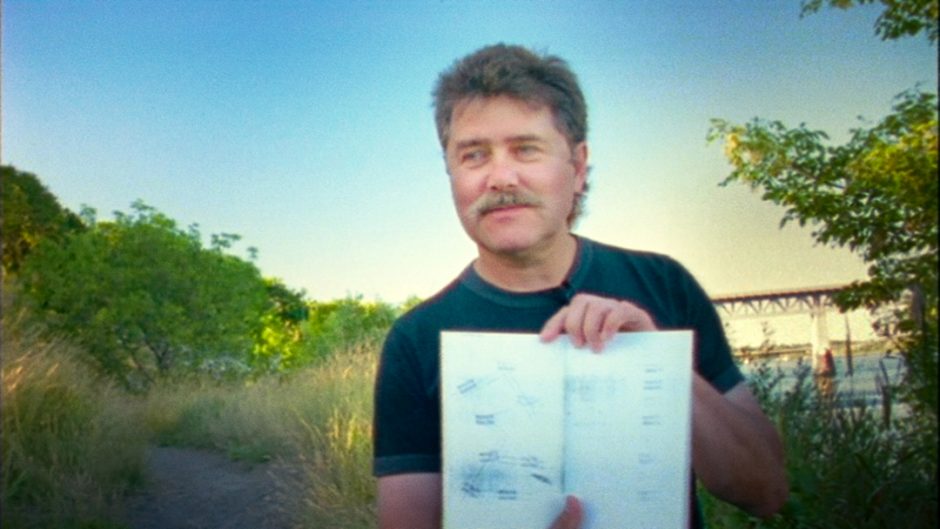
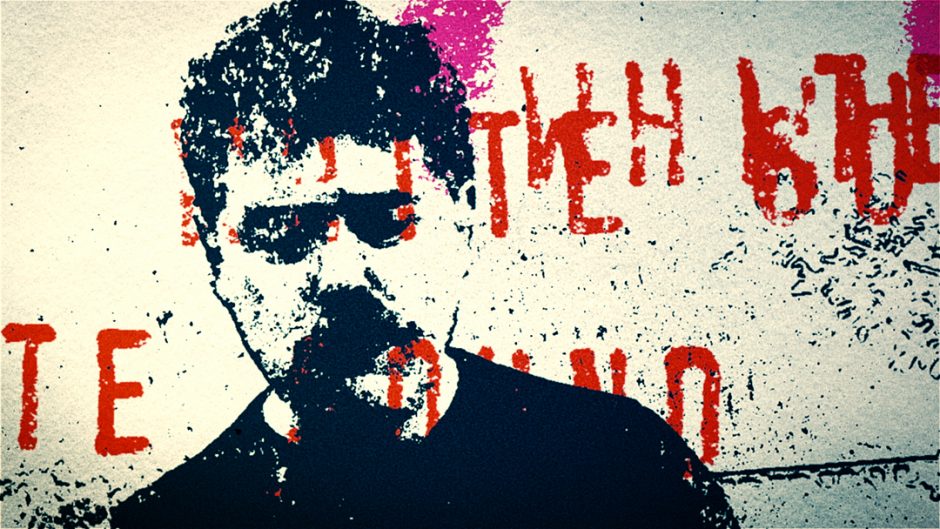
Let’s talk about the title of the film — obviously, Nichol’s poem ‘The Complete Works’ is being alluded to, but why give the film this name?
I think it’s a cheeky title. I feel like there’s a sense of humour to it that I wanted to start the film with. ‘The Complete Works’ is a really funny poem but it’s also deadly serious. It frames his work as a series of permutations of the alphabet. Not only is it the alphabet — it is specifically the alphabet as it is laid out on a typewriter, which divides letters, numbers and punctuation into separate keys, and standardizes the spacing, size and font. The typewriter transforms the act of writing into an act of selection and combination.
Nichol’s ‘The Complete Works’ explores his poetry as mediated through the typewriter and the written word. I thought is was also really important to start the film with a picture of the poem as always mediated and always part of a previously existing system as opposed to some idea of a “pure” or “true” expression.
I knew I was going to survey a body of his work. It’s a ‘selected works’, but in a way it’s a ‘complete works’ too if we look at his work as a networks of methods and practices. A complete works is type of completion. I feel like Nichol’s work really resists this kind of closure; it’s still going on and people are still working with it. It’s still relevant, still changing. I think that’s actually one of the testaments to the strength of his work. I think that Nichol’s complete works are, in a way, a series of practices and methods which have the possibility of generating new works, new meanings endlessly.
I was thinking about the two lines at the bottom of ‘The Complete Works’ — “any possible permutation / of all listed elements”. I was thinking about this film as a permutation.
It is permutation, yeah. It really is a selection of his works that have been remixed in many ways to form this new thing. At one point, I did a small screening for Steven Ross Smith, Michael Dean and a couple of other friends. After the film, Michael Dean said, “wow, that was really interesting. It’s certainly not his canon of works. I feel like you’ve actually figured something out about him.” He also said, “it’s definitely you but it’s also him. It’s something new.” For me, that was an amazing compliment for the film, the best possible response from somebody who knew him: that the film could find and show something new in Nichol’s work.
Nichol’s work is a point of attraction for several generations of writers and creative types, even though most never had the chance to meet him. How might you explain the desire to pick up that torch so to speak, either in collaboration with Nichol’s own writing or by picking up his methodologies and techniques?
It’s hard for me to speak about other people’s attractions. Speaking for myself, I think it’s firstly his intelligence and his generosity. I think he’s very generous, he allows the reader into the text. A lot of poetry can be quite difficult to engage with — sometimes this is its attraction. This is still the case with Nichol –– there is a lot in there that reaches out to other bodies of work, to semiotics and many different ideas or theories — yet above all that, there’s a kind of generosity and an invitation to participate in the way the text works for the reader. He includes the reader and that’s what attracted me — and, I imagine, that’s what attracts other people as well. And there’s humour. I feel like in an initial encounter with this type of work, Nichol offers many ways in.
I’m wondering about the reception of the film — what are the responses from people that have seen it, especially from people that haven’t encountered Nichol’s work before?
When I made the film, I really wanted to make something that would serve as an introduction to his work, yet I didn’t want to do a writer’s portrait — I sort of feel like that’s been done. Brian Nash did a great job of that and so did Michael Ondaatje. The response to what I have made — and I personally think of it as an extended film poem — has been largely positive.
It was accepted into DOK Leipzig, a fairly prominent documentary festival, proof that it can be seen as a documentary. While it’s not biographical or historical, it documents Nichol’s writing practice so it fits into documentary in that sense. At the DOK Leipzig Festival, almost no one knew who bpNichol was. There was one woman from Toronto there who was familiar with the work. She was so happy to see bpNichol as a part of a documentary at that festival; she really enjoyed how the film worked with the text, worked with the poetry. It premiered in Australia at the Queensland Poetry Festival where it was really well received by poets. It’s going to be showing at Stanzas in March, which is a Scottish poetry festival in Edinburgh. It’s interesting because the film is fitting into these strange sort of places — documentary festivals, literary festivals. It’s fascinating to try and figure out how to speak to each of these audiences about the film.
Still, there is a whole list of festivals that it won’t run in, and I think that’s because it’s difficult to categorize, and it is an odd length — it’s not quite
an experimental film, not quite a documentary, not quite a film poem. Film poetry festivals see it as too long; they’re often looking for something that’s ten minutes and under. I feel like a lot of film festivals, like the Toronto International Film Festival, are not sure what to do with it.
What does the future look like for the film?
I’m still in the process of entering it into, and showing it at, festivals. The folks at DOK Leipzig were hugely helpful in directing me to a number of different festivals and programmers. Filmmaker Tony Donahue sent me a list of what seemed like hundreds of festivals, it’s amazing; he’s been really encouraging about entering as many places as I can and working hard to try and find an audience for it. He said, “don’t dismiss the fact that there’s likely a very strong audience for this film, you just have to find it. You’ve got to do that work though,” so that’s what I’m doing right now. I’m doing the work to make sure that this film finds an audience. Hot Docs here in Toronto hopefully, we’ll see. I entered a lot of documentary film festivals after my excellent experience at DOK Leipzig and some experimental festivals and underground indie festivals. I’m trying everything I can. I figure for a couple of years I’m going to work on entering festivals and then from there I’ll see what else I can do with the film in terms of creating an interactive project based on it. I feel like I could keep working on this thing probably for the rest of my career.

Yeah, The Complete Works! In what ways do you think the film might add to or be a comment on Nichol’s legacy?
I feel like that is an important question for the work; there is an answer in there that has to do with his estate.
I think his work really invites collaboration. We were talking earlier about how his works are very generous and about how they include the reader, and I feel that there’s an aspect to that that really makes people want to interact with his texts. In many ways I feel like his texts really come to life when you start to work with them. You start to really learn things about them that you wouldn’t know just by reading them. There’s that Gertrude Stein quote about proofreading, “I always say that you cannot tell what a picture really is or what an object really is until you dust it every day … ” I think his work really invites that. One of the things bpNichol dedicated his life to was helping other writers. He donated thousands of hours to editing other people’s works, he published other people’s works. He was always building community around writing and around poetry. He was a kind of anchor for the scene in Toronto and, in many ways, his estate has continued that ethic. Ellie has been very open about sharing the work with PhD students, with artists; there are theatre productions, there are films, there are just countless people doing stuff around his work, and she is allowing his work to circulate, which I think ensures its continued renewal and relevancy in creative circles. As long as the work circulates, it will be alive. I’ve worked with a lot of copyright holders and it’s not a foregone conclusion that they’re going to be open and generous. She’s really done a great job of keeping the work relevant.
In the end I can’t really gauge what the impact of the film will be on Nichol’s legacy. I think that the film uses many genres and forms to engage with a selection of bpNichol’s works in a way that emphasizes the methods of his practice — this is something new. I have hopefully done it in a way that is exciting and interesting enough to bring more readers to bpNichol and will invite more collaboration and engagement with the work.
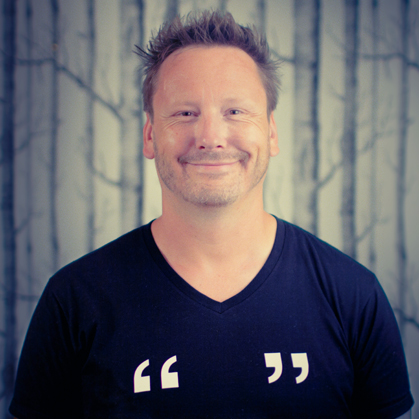
Justin Stephenson: The Complete Works
appeared in CAROUSEL 37 (2016) — buy it here
